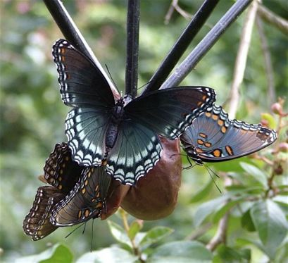-
Nature’s butterfly feeders
If the hummingbird buzz and pre migration isn’t enough activity right now, the local butterfly population seems to have exploded! The past few days have provided some mesmerizing views around the garden. Four species of the jeweled wonders have been spotted flitting around flowering shrubs and plants.
Lantana, butterfly bush and abelia have recently been the most popular of nature’s butterfly feeders. Monarchs and swallowtail butterflies being the most abundant. In past years the leaf misters were especially attractive, but with all the rain this season, they haven’t been employed much. Instead the rains have produced bumper crops of flowers, in turn feeding anyone who pollinates!
Store-bought butterfly feeders are great, especially the ones with wicks that allow butterflies to feed more naturally (like drawing nectar from flowers). Even a plate of over-ripe fruit chunks may entice, but nothing beats nature’s feeders!
-
whoa! Beer for attracting butterflies?
Yep, turns out that host plants and nectar-producing flowers aren’t the only foods butterflies enjoy. Seems that beer is mighty popular with the winged wonders too! When mixed with molasses and a few slices of over-ripe bananas, beer is an ultimate attraction due to the high sugar content. The best way to offer this type of mixture is on a shallow dish, or spread over some rocks (in full shad
e is best).
Of course butterflies will take some time to find the new food source, but if habitat is suitable and they’re already hanging around, chances are very good they’ll discover the treat. Habitat would begin with gardening, and oh, the leaf misters! Butterflies adore the gentle mist in summer. To be honest, we’ve never offered butterfly feeders in our yard, but every summer the action is non-stop. Two misters and plants like lantana, milkweed, butterfly bush, abelia and angel trumpet abound, and the best part… they’re all perennial plants which come back every year!
Now if you’re more inclined to offer traditional nectar in your butterfly feeder, remember that they do not drink from an open liquid source. A sponge (preferably new) is necessary to soak up the liquid, and a regular kitchen sponge will do the trick well. In this manner it acts as a wick, where butterflies can draw their food from, more along the lines of extracting nectar from a flower. This stoneware dish is perfect for offering nectar and the beer & molasses mixture, even a few pieces of old banana.
The video below, by P.Allen Smith offers some great suggestions for attracting butterflies through gardening. As far as the beer & molasses mixture? You’re on your own with that!
- Bats & Butterflies, Bird Accessories, Butterfly Feeder, Fruit Bird Feeder, Squirrel Feeder, Uncategorized
Unusual Butterfly Feeders offer great versatility, and a cool metamorphosis video too!
Love cool stuff! These butterfly feeders(coming soon) do double duty for fruit lovers like; Warblers, Thrashers, Woodpeckers, and lots of other migratory friends who adore fruit and/or jelly. An Oriole’s favorite, the center may be filled with jelly, while orange quarters are placed right along side.
As a nectar feeder for butterflies, the sea sponge is included. It acts as a wick-absorbing the liquid because butterflies will not drink from an open source. This method recreates how the flying gems actually draw nectar from flowers. Over-ripened fruit may also be placed on the outer dish, offering butterflies a varied and swell refuge.
Handcrafted of weather-proof stoneware, lead-free glazes, and brass chain, it’s safe outdoors year-round. The feeder may also be placed in the dishwasher for a quick & thorough cleaning. Lure butterflies to your place offering nectar and fruit together in this groovy, hand-made feeder.
And speaking of fruit, butterflies enjoy a variety of over-ripened ones. Grapes, oranges, melons, peaches, apples and berries will entice them to nibble and come back for more. This durable stalk feeder is perfect for creating a fruit smorgasbord, even corn on the cob works well in winter after butterfly migration is complete. (Yes… some folks really do feed the squirrels!)
Of course habitat plays a key role in attracting butterflies, and omitting pesticides will prove most beneficial. Nectar-producing flowers (lantana, abelia, and butterfly bush) are most common, and should be included in the landscape. Host plants are also required, and will likely deteriorate with munching! Milkweed, parsley and cabbage are a few favorites caterpillars love (and need) for growth to chrysalis stage.
Ever witnessed the stages of a butterfly metamorphosis? Until seeing the video below, I can’t say that I have! Truly a masterpiece of nature, it’s worth the watch!

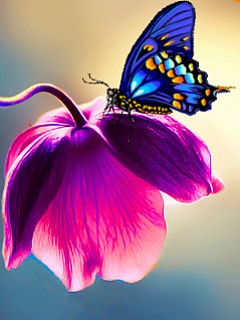
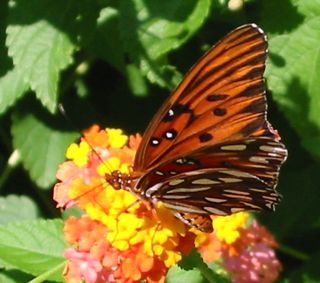
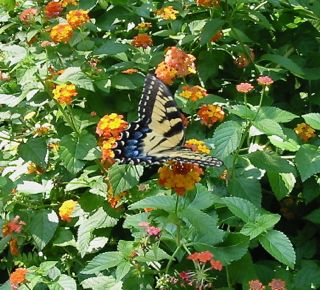
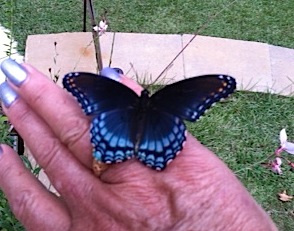

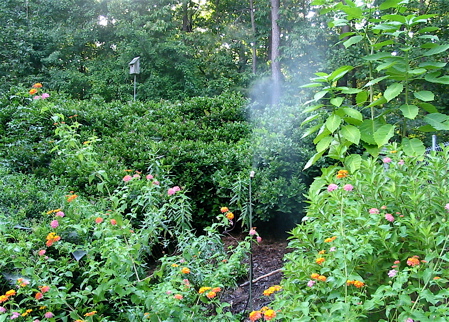
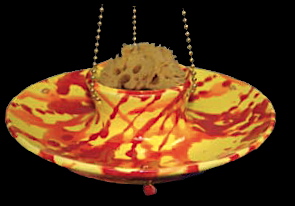 Now if you’re more inclined to offer traditional nectar in your butterfly feeder, remember that they do not drink from an open liquid source. A sponge (preferably new) is necessary to soak up the liquid, and a regular kitchen sponge will do the trick well. In this manner it acts as a wick, where butterflies can draw their food from, more along the lines of extracting nectar from a flower. This stoneware dish is perfect for offering nectar and the beer & molasses mixture, even a few pieces of old banana.
Now if you’re more inclined to offer traditional nectar in your butterfly feeder, remember that they do not drink from an open liquid source. A sponge (preferably new) is necessary to soak up the liquid, and a regular kitchen sponge will do the trick well. In this manner it acts as a wick, where butterflies can draw their food from, more along the lines of extracting nectar from a flower. This stoneware dish is perfect for offering nectar and the beer & molasses mixture, even a few pieces of old banana.